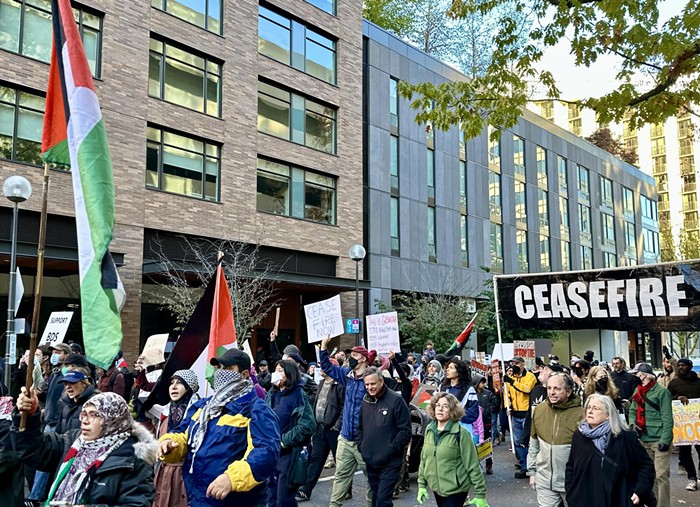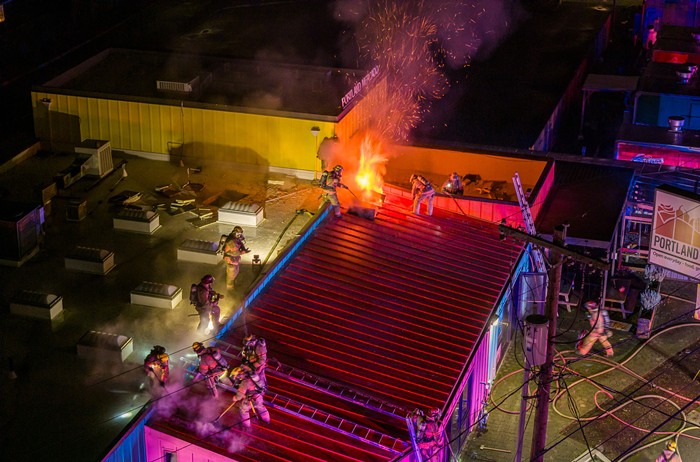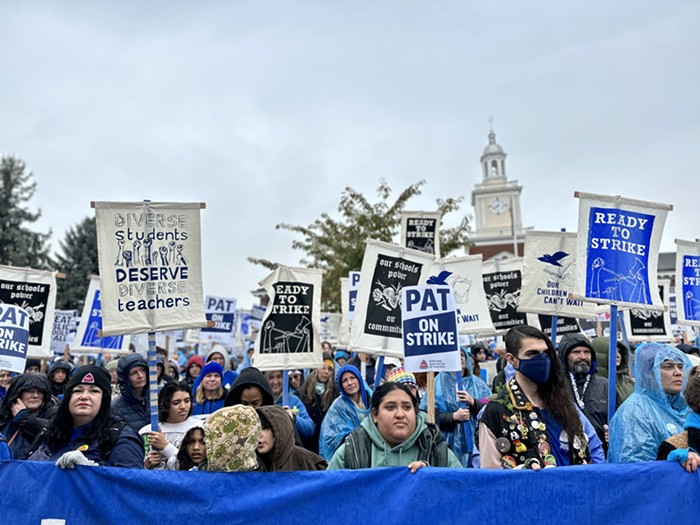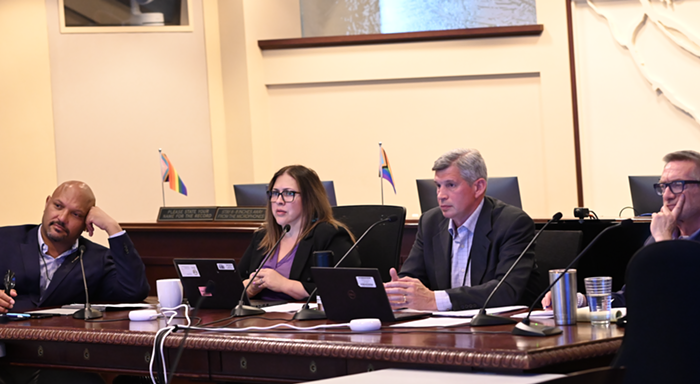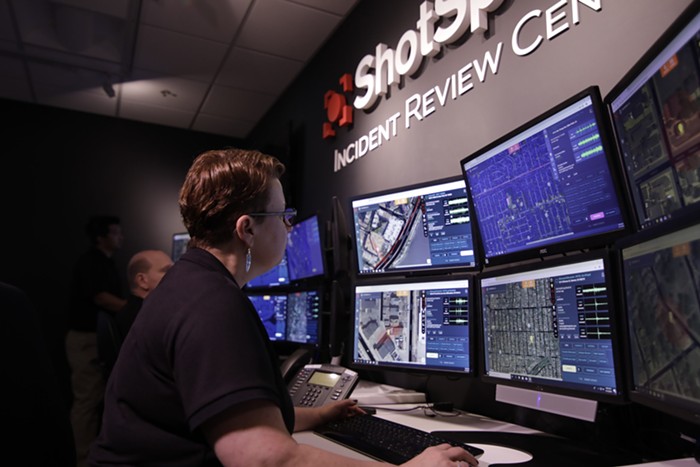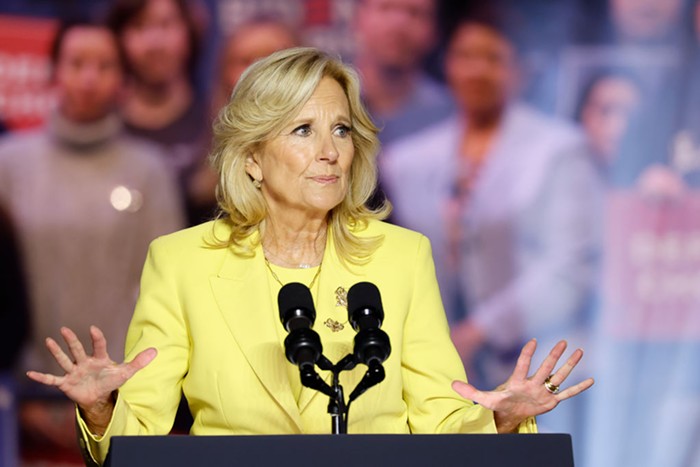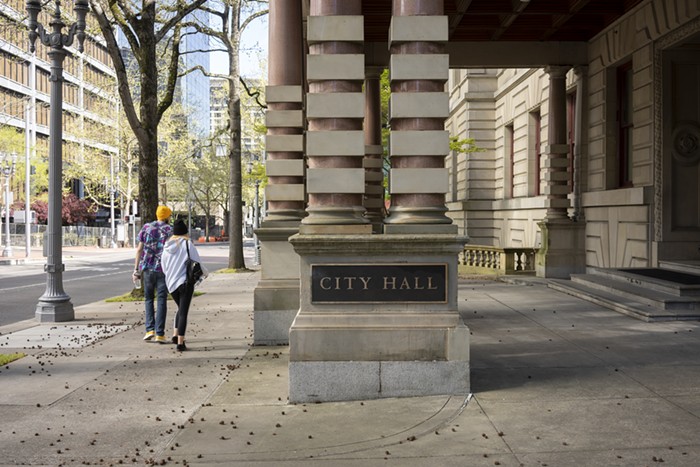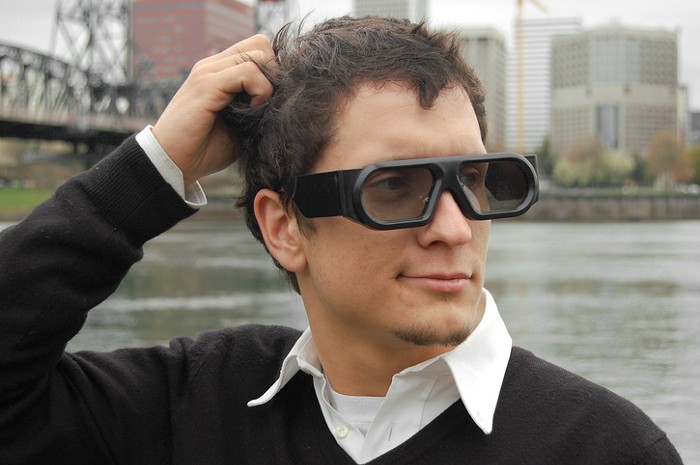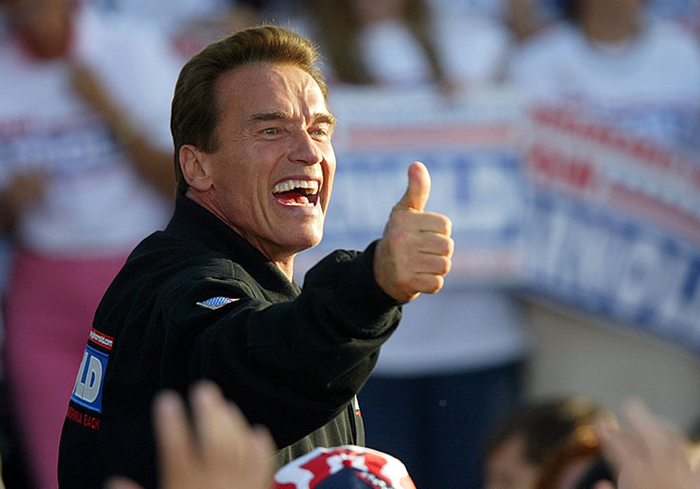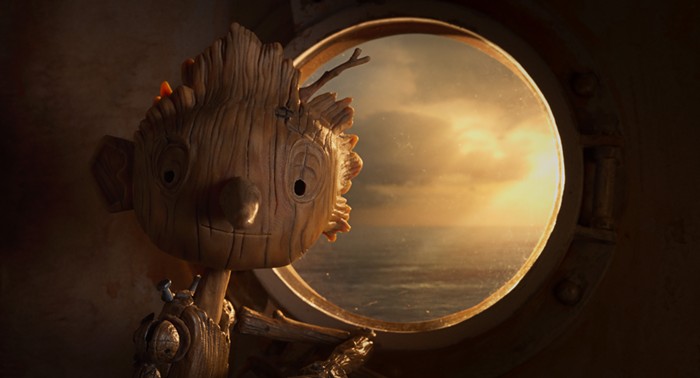The Mayor and City Commissioner Dan Saltzman plan a press conference at 9:15 this morning, most likely to discuss their invitation to the Department of Justice Civil Rights Division to investigate the Aaron Campbell shooting.
Meanwhile 454 pages of Grand Jury transcripts released yesterday afternoon by the District Attorney's office raise fresh procedural concerns about the shooting on January 29—particularly the actions of the officer who shot Campbell with a beanbag round.
Before you read this post I would recommend reading Maxine Bernstein's roundup of the testimony from 7pm last night, because it usefully summarizes many of the various witness accounts.
Instead of doing that, I intend to focus here on some of the biggest concerns raised by the transcript, and the apparent chaos on the scene.
Campbell, who was distraught over the death of his brother Tim—a heart transplant patient—late the night before, met with a sympathetic ear in Officer Jim Quackenbush, who contacted him by phone.
"I said it’s my understanding that you lost your brother this morning, and I’m really sorry to hear that," Quackenbush told the Grand Jury. "I told him that, you know, if it’s—if it—if it means anything to you I lost both of my grandparents over the holidays recently, and I know what it’s like to lose family, people that are very close to you, and I know how painful that is.”
"I said we’re not going to go in there," Quackenbush continued. "We’d like to try to find a way for you to come out and talk to us, and maybe we can get you some place where you can get some—some help or some crisis tools or some things like that."
Moments later, Campbell's children came out of the apartment. Then, minutes later, Campbell himself emerged. But having spoken on the phone with a very sympathetic and understanding officer, Campbell all of a sudden found himself having commands barked at him by Officer Ryan Lewton.
Campbell began walking out of the apartment backwards, with his fingers interlaced on the back of his head.
“I remember he was doing what they were telling him to do," said Officer Jeffrey Elias, the K9 officer on the scene. "But eventually it got to the point where it’s like put your hands up, and he wouldn’t put his hands up.”
“Officer Lewton said, you’re going to get shot if you don’t put your hands up," Elias told the Grand Jury. "And he said something like, shoot me then, or fucking shoot me then. I can’t remember exactly what he said. He said shoot me then. And Officer Lewton shot him with the beanbag.”
One key area of concern that emerges from the transcript is the use of the beanbag shotgun on Campbell, because this is effectively the point of no return in the incident: Campbell started moving after he was shot with the beanbag round, in such a way that Officer Ron Frashour felt justified in shooting him.
Officer Lewton had a hard time justifying his use of the beanbag shotgun to get Campbell to comply with his command to raise his hands above his head. It appears, from all the Grand Jury accounts, that Campbell was only offering passive resistance to Lewton's commands.
“He kept his hands where they were, kept them on his head," said Officer David Kemple, another witness. "And he just—he wasn’t doing—and he wasn’t doing anything.”
"He just stands there," Lewton told the Grand Jury. "And that’s when I fired my first bean bag—first bean bag round at him.”
Why did you do that, Lewton was asked.
“To gain compliance.”
And what was his expectation?
“My expectation was that I was going to shoot a round at him, and he was going to put his hands up in the air after that,” said Lewton.
A Grand Juror pressed Lewton on this point. Earlier, Lewton had told the Grand Jury that his expectation was "at the very minimum we were going to put him on some sort of mental health hold and take him to a hospital, because it sounded like he was having some suicidal thoughts, you know.”
So the Grand Juror asked: “So with all the instructions being given and shooting—and telling him to put his hands straight up in the air, was that concerning that he wasn’t getting it if you felt that he was under some mental issues? Do you see what I’m saying? I mean, if he is not getting or understanding what you are saying, was it still—did you still feel like you were threatened? That you would need to shoot him with a bean bag? Or did he make any displays or—“
“I—I guess, uhm…I didn’t…it didn’t…I can’t think…" Lewton responded. "I…the thought crossed my mind that we needed to take action, not that I needed to tell him again to—ask him again to put his hands above his head. I thought that—you know, there is a million things going through my mind, you know. One of the options would be, you know, is he making a plan to attack us? I didn’t know. So my thought was I need to take action.”
Officers are supposed to respond to a perceived threat in any situation based on a totality of the circumstances. Nevertheless it is possible that Lewton's use of the beanbag shotgun in this incident may have been excessive. For example Police Chief Rosie Sizer recently ruled against another officer's use of a less-lethal shotgun in the 2006 Waterhouse case.
Sizer testified about that finding in Federal Court last September: "I looked at the full investigation and felt that Officer Bocchino's use of the less lethal shotgun," she said. "I felt that it was unnecessary because of the availability of other police resources at the scene and because I didn't believe that Mr.Waterhouse's failure to put down the video camera was an indication of aggressive physical resistance or an intent to be aggressively physically resistant."
Once Cambpell was moving forward, after having been shot, Officer Ron Frashour felt he had to shoot him.
“I knew that I could not let him get to hard cover and start shooting at the other officers and myself," he told the Grand Jury. "I—I—-so I didn’t want it to happen. I mean, it is not—it was unfortunate, I had to shoot him when he got to the edge of the car.”
The bureau's manual of policy and procedure goes into great detail on use of force and when it may or may not be appropriate. Ultimately, that decision will be made by the investigation into the events at the scene, by Chief Sizer, the Citizens' Review Committee, and possibly even city council, if they can't agree. A federal jury will also make a different kind of judgment if the case goes to civil trial. Still, here are some of the factors to be weighed before using force, according to the bureau's manual.
a. The severity of the crime.
b. The impact of the person’s behavior on the public.
c. The extent to which the person posed an immediate threat to the safety of officers, self or others.
d. The extent to which the person actively resisted efforts at control.
e. Whether the person attempted to avoid control by flight.
f. The time, tactics and resources available.
g. Any circumstance that affects the balance of interests between the government and the person.
Aside from raising further concerns about police actions, the transcript lays the nature of Campbell's personal tragedy very bare. Adrienna Jones, the mother of two of Campbell's children, said he began acting very strangely on Thursday, January 28, having come to her place to rest after being at the bedside of his dying brother, Tim. Campbell spoke to his daughter.
"They were going to go get a pizza. And before they left he asked her if he died would she be sad. And she said no. And then I was like why would you ask a five year old that?" said Jones. "And he was like, see; they don’t need their dad. And I’m like she’s only—she’s only five. She doesn’t understand what you’re really asking her.”
Campbell talked about killing himself that night, and talked about giving his brother his own heart, like Denzel Washington in the movie John Q, said Jones. Then he pulled out a gun and put it to his head, before heading out to the car and trying to pull the trigger, she told them. Then he fired a gunshot in the air.
“I started screaming. I was like, what’d you do, what’d you do, because I really thought he’d shot himself," Jones told the Grand Jury. "And then I almost fainted. And so he came towards me and caught me before I fell to the ground.”
Why didn't she call the police?
“Because I knew if I called the police when it was just me, him, and the kids then it could have turned out the same way as it turned out on Friday,” said Jones.
Campbell had also tried to kill himself before, according to Jones. "I know there was a time before," she told the Grand Jury. "But I have found out he was in the—the mental hospital, because I guess he tried to take a whole bunch of pills or something. But I wasn’t around him at the time, so I heard that from his mom.”
Campbell's grandmother's partner, Philip Joseph Mann, told the Grand Jury he was frustrated at being kept back from the scene.
“If I could have just been there or time had changed, I would have had Aaron come out of the house," he told the Grand Jury. "'Aaron, take off your shirt, come out with your hands in the air,' and he would have done it in a heartbeat or, you know, no problem; not a question in my mind that he would have, whatever, listened to what I said."
More frustrating still, Mann begged with police negotiators to be let through to speak with his partner's grandson, he said.
“I got out to the—out to the site, and was stopped by a Portland Police officer that said “Negotiator” on his jacket and talked to him for almost a half-hour while I begged him to please let me go talk to Aaron," he said. "Whatever the situation was, I could bring it to a peaceful conclusion. He kept telling me, 'Just to hold on, hold on and hold on.'"
The District Attorney's office has been accused in the past, for example in the case of the death of James Chasse jr, of colluding with the police bureau to avoid an indictment of one of its officers. That's one of the reasons why the release of the transcript of this Grand Jury proceeding is so historic. It's difficult to find evidence of collusion in the transcript. But there are some noteworthy points where the DAs do seem to be interested in steering questioning away from issues that might land the police involved in trouble with the bureau, or expose them to a potential civil suit.
One juror, for example, started to ask the K9 officer about being "trained to kill," with lethal weapons. “You know, let’s leave that," interrupted Deputy District Attorney Don Rees. "That’s a training question.”
Conspicuously absent among the witnesses called to the Grand Jury is Sergeant Reyna, who was supposedly in tactical command of the scene. As highlighted in a letter written by the Grand Jury last Thursday, February 11, a broad picture emerges from the transcripts of a scene without a tactical plan, and it's unclear why Reyna wasn't called to explain that, further.
One juror tries to ask Officer Quackenbush about Reyna's control of the situation “At this point it’s—it’s Sergeant Reyna who’s in charge of the whole situation; is that correct?”
“We had two sergeants there,” says Quackenbush.
“I see,” says the juror.
“So they—I think they’re—I think they’re both kind of coordinating different things, but I’m not sure,” says Quackenbush.
"Either sergeant, then, may have seen him come out, is that correct?" asks the juror.
Then Rees interrupts. "Again, I would just caution you…
"Yeah," says Quackenbush.
"Only to answer---" says Rees.
Lastly, not all the witnesses felt that the officers were blameless.
“At the time he got hit with them, he still got his hands up," said Kenny Boyer. "This is how bad he is trying not to get shot. He had his hands up when he start getting hit, even though he is no threat. If you had seen it the way I seen it, you could tell he just trying to cover himself from getting hit because he probably thinking that he got hit for no—for no reason.”
"And he wasn’t threatening," Boyer continued later. "He didn’t show no threat, no sign. If I knew he was in the wrong, I’d say. But he was in the right. He had his hands on his head the whole time. That’s that.”
